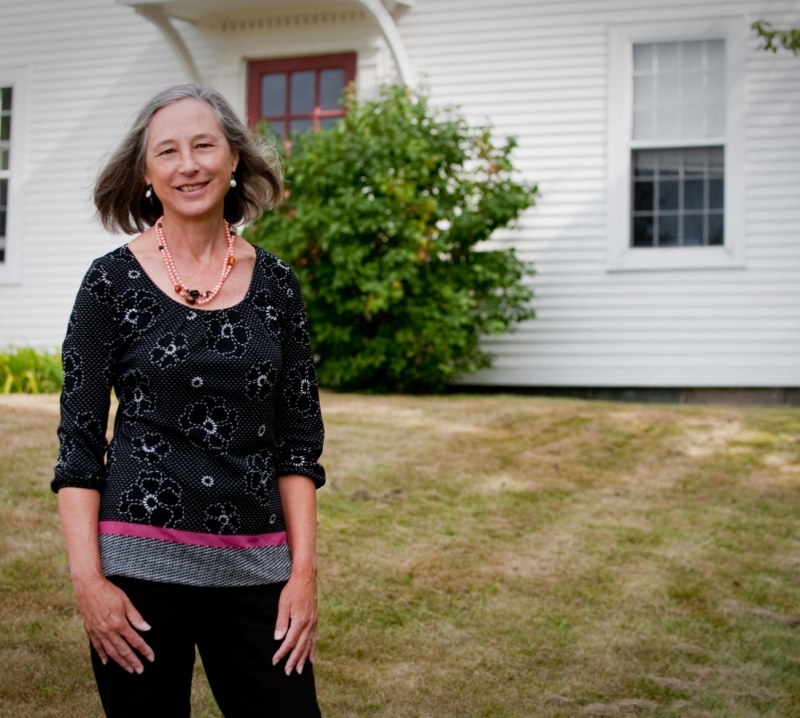At Marlboro College, the arts play an integral role in an education that sets free the mind and the spirit.
By Ellen McCulloch-Lovell
The arts infuse Marlboro College, our approach to study, way of thinking, and facilities. One of my joys and one of my goals as president of Marlboro College has been to keep its strong identity as a liberal arts college. Teaching and learning happens in many simple 19th century farm buildings on the Marlboro campus and in downtown Brattleboro at our Center for Graduate and Professional Studies. As the undergraduate college developed from its post-World War II founding arts facilities were added: the Whittemore Theatre, Drury Gallery, Persons Auditorium, Serkin Center for the Performing Arts (housing dance and music), and the visual arts complex of Baber, Woodard, and the Perrine and Gib Taylor studios.
At Marlboro College, we use “liberal” in the root meaning of “free” and “arts” to mean the knowledge and skills that free the mind and the spirit. One strong tenet of our approach is that the arts are essential to a broad, humanistic education. Therefore, at this small college, about one-quarter of undergraduate faculty offer courses in painting, sculpture, print-making, ceramics, photography, film and video, art history, dance, theater, and music.
Because we believe that “clear writing means clear thinking,” the writing and literature faculty work with students on fiction, poetry, non-fiction, and expository writing. Faculty and staff advisors ask students to study broadly. A young scientist will be encouraged to take a dance class or find time in the painting studio. A photographer will be urged to take philosophy or physics. Over one-quarter of Marlboro undergraduates incorporate the arts into their culminating study, called the Plan of Concentration.
As our sculpture professor Tim Segar, says: “making is thinking.” The student makes discoveries by making an object, a dance, a composition, a poem, or a play. That person comes to understand not only the tradition of the art form, but its skills of practice, which include research, problem-solving, analysis, collaboration with others, attaining boldness and confidence, and the ability to combine disparate elements to create something original. Students also discover the possibilities of materials, finding out what shapes they can take, what themes can be expressed. They learn from creative risks taken and, like scientists, from experiments that fail. These ways of learning are not limited to the arts at Marlboro. Yet the arts provide the direct, tactile experience of learning by doing, knowing by making.
It’s not surprising that students find creative spaces all over campus, not only in arts facilities. Music happens in the practice rooms and also in the student campus center; sculptures pop up by the fire pond and under the apple trees; ceramic tiles enhance the walls of the studio; dances are performed on the lawn; films are made on campus and on location in Vermont and most recently on Nantucket.
This year, due to the extraordinary generosity of anonymous donors, Marlboro College will break ground on an expanded and renovated visual arts complex. The Baber and Woodward buildings housing painting, print-making, and photography will be updated. The sculpture and welding studios will be incorporated into a new building, the Snyder Center for the Visual Arts, which will consolidate ceramics production, glazing, and firing, and bring film together with the rest of the visual arts. A grant from the Andrew W. Mellon Foundation has advanced faculty and students’ abilities in the digital arts and those creative directions will also be pursued at the new Center.
I am a great believer in the potential of “creative space.” Once the Snyder Center for the Visual Arts is completed in the summer of 2015, I will look forward to seeing the new work and “thinking by making” that will flow from experienced faculty and imaginative students there. It will be a great pleasure to look back on my 11 years at Marlboro and know there will be an even stronger presence of the arts in the liberal arts.
Ellen McCulloch-Lovell is president of Marlboro College.























































